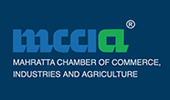If you're new to horseback riding, the amount of equipment available can be quite overwhelming! New riders are frequently left to wander around a store or scroll through pages of merchandise online. Here's a helpful beginner horseback riding equipment list that identifies must-have items and what you need to know about each.
Horseback-Riding Equipment Checklist
Here's a quick guide to shopping that you can easily save on your phone or computer. Don't worry if you don't recognise some of these items. We'll go over each one in detail.
Horse Rider Gear
- Boots (tall boots or short paddock boots)
- Helmet (for equestrians)
- Riding vest (for equestrians)
- Riding pants (breeches or jodhpurs)
- Shirt (breathable fabric that does not restrict movement)
List of Horseback Riding Equipment
- Grooming equipment
- Ant repellent
- Blanket or sheet for horses
- First-aid supplies
- Saddle, girth, and saddle pad
- Leather and stirrup irons
- Bit, reins, and bridle
Introduction to Horseback Riding and Equipment
This post will keep you focused on the most important equipment to purchase when you first begin. It may appear to be a lot, but we'll break it down for you so you can easily understand and identify what you need. If you come across any unfamiliar terms or want to learn more, this glossary of equestrian terms may be useful.
1. Boots
Any equestrian should have a good pair of riding boots. Regular boots are not recommended because they lack the safety features found in riding boots. Riding boots have a small heel, a lightly textured sole, and a firm toe box to protect your toes. Tall boots are mostly used for shows, but they can also be used for schooling and to keep the saddle from pinching. Paddock boots, also known as short boots, are versatile and comfortable. If you're wearing paddock boots, you should wear half chaps for better grip and added leg protection.
2. Helmet
A horse riding helmet is required for all equestrians, regardless of experience level. Horseback riding is a hazardous sport with a high risk of head trauma. A helmet specifically designed for horseback riding is required because it has the necessary safety technology. Additionally, you must ensure that your helmet is properly fitted. This handy guide tells you everything you need to know about measuring your head for a horseriding helmet.
3. Security Vest
A safety vest is another excellent way to keep yourself safe in the event of a fall from your horse. A safety vest shields your torso from both a fall and hooves' impact. There are various styles available, some of which are filled with air for added protection. Safety vests are a good idea, even if they add some bulk.
4. Riding Trousers
Breeches are a type of athletic pant designed for horseback riding. They're made of a thin, stretchy fabric that allows for freedom of movement and doesn't have an inside seam to prevent chafing. They are designed to fit snugly and have special gripping fabric for safety and communication with the horse. Jodhpurs are another style that is sometimes worn when horseback riding, though these are more commonly seen on children.
5. Shirt
Your pants should be designed for horseback riding, but your shirt has more leeway. There are horseback riding shirts with features to ensure comfort. However, if you're in a hurry, you can wear any shirt that doesn't restrict your movement and is made of a breathable fabric.
Horse Riding Equipment Must-Haves
A horse also requires comfort and safety equipment. Here are the essentials you'll need to get started.
1. Grooming Instruments
Grooming your horse is a good way to keep him fit and healthy. It makes the coat shine, increases circulation, and serves as an early warning system for any health issues that may necessitate medical attention. Grooming is also a great way to spend time together. Everything you need to know about horse grooming tools is covered in this handy guide.
2. Fly Repellent
Flies are an unavoidable fact of life for horses. They are a nuisance and a health hazard because they transmit disease. Though you can't eliminate flies, you can significantly reduce their numbers by making the area around your horse less appealing and using a fly spray on your horse.
3. Sheet or horse blanket
Is a blanket necessary for your horse? The truth is — it depends. It depends on your location and how cold and damp it gets, as well as your horse.
4. Emergency Kit
Any horse owner must have a well-stocked first aid kit. When your horse is injured, the last thing you want to do is waste time looking through closets for what you need. You may still need to contact your veterinarian, but you can keep your horse stable while you wait. You can purchase a ready-made kit or easily create your own horse first aid kit.
5. Girth, Saddle, and Saddle Pad
A saddle is most likely the most expensive purchase you will make for your horse. Saddles are made to fit both the rider and the horse, so it's critical to get the right fit. You should also learn how to maintain your saddle so that it lasts. Saddle pads are used beneath the saddle to provide a thin layer of cushion and prevent the saddle from rubbing against your horse. Saddle pads also absorb perspiration, keep the saddle cool, and protect it. A girth, which is a band that attaches to a saddle and runs around the horse's belly to keep the saddle in place, is also required.
6. Bit, Reins, and Bridle
When riding a horse, one of the most important communication tools is a bridle. An English bridle has four parts: the crown piece, noseband, cheek pieces, and browband. There are numerous options, and what you choose will be determined by the type of riding you do and whether you intend to compete with your horse. You'll need to know how to assemble an English bridle and how to select the best bit for your horse.
7. Leathers and irons for stirrups
Stirrup irons are the metal rings with which you place your feet when riding a horse. They are fastened to the stirrup leather, which is fastened to the saddle's tree under the skirt. Stirrup irons are used to provide a stable area for your foot to mount your horse as well as a sturdy flat base of support for your foot while riding.
You should also think about leg support and protection, such as horse boots. Whether or not you require these will be determined by your horse and your specific requirements.
Concentrate on the Horse Riding Equipment You Actually Require
When you first start riding horses, there is a lot you could get, but you can better manage your budget by focusing on what you really need upfront. Everything else is secondary.
To learn more about horse riding, have a look here:
.jpg)












